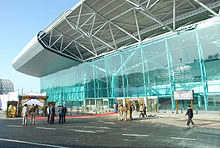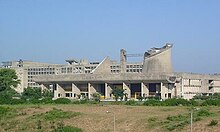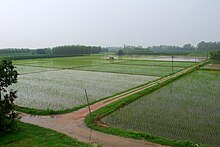Demographics
Main articles: Demographics of Punjab (India) and List of cities in Punjab and Chandigarh by population
| [hide]Population Growth | |||
|---|---|---|---|
| Census | Pop. | %± | |
| 1951 | 9,161,000 |
—
| |
| 1961 | 11,135,000 | 21.5% | |
| 1971 | 13,551,000 | 21.7% | |
| 1981 | 16,788,915 | 23.9% | |
| 1991 | 20,281,969 | 20.8% | |
| 2001 | 24,289,296 | 19.8% | |
| 2011 | 27,704,236 | 14.1% | |
| source:Census of India | |||
According to the 2011 Indian Census, the population of Indian Punjab is 27,704,236 (14,634,819 males and 13,069,417 females). The literacy rate is 75%, with male literacy being 80.23% and female literacy 68.36%.
Major cities by population in Punjab are:
- Ludhiana, population of 1,613,878
- Amritsar, population of 1,183,761
- Jalandhar, population of 873,725
- Patiala, population of 446,246
- Bathinda, population of 285,788
As of the 2011 census, the sex ratio of Punjab was 895 females per 1000 males. On account of female foeticide, Punjab has the second lowest sex ratio amongst all Indian states.
Being an agricultural state, a large part of the population lives in rural areas. Roughly 66% of the people live in rural areas while the other 34% are urban residents.
Punjab has the highest dalit population in India at 31.9%, including Scheduled Castes and Scheduled Tribes. Districts with high dalit populations are Ferozepur (42%), Nawanshahr (40%), Jalandhar and Muktsar (38%), Faridkot (36%), Tarn Taran (32%) and Kapurthala (30%). According to the Socio Economic and Caste Census 2011, Punjab has 36.74% scheduled caste households, which is the highest in India, but scheduled castes get only about 24% of reservations.
Punjab has highest percentage of landless households, about 45.34% of which are earning their income from manual casual labour.







